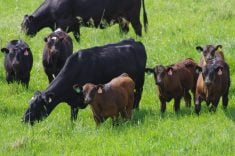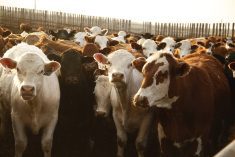The Manitoba Crown Land Leaseholders Association is cautiously optimistic about recent changes to Manitoba’s Agricultural Crown Lands regulations.
“We appreciate the hard work the agriculture minister’s office and department staff did on this file to get it done in such a short time frame,” said association president Brent Benson. “But they will have to forgive us if we watch warily for the implementation. The last four years and previous agriculture ministers have taught us to be cautious when trusting politicians.”
Why it matters: Forage leaseholders spent almost four years contesting 2019 changes to Crown land system regulations.
Read Also

Seeding Indigenous agricultural prosperity
National Circle for Indigenous Agriculture and Food says Indigenous agricultural success needs strong relationships.
In 2019, the crown lands program was significantly changed in an attempt to modernize the process, institute allocation by auction and, as the province said at the time, make it more accessible to young farmers and Aboriginal people.
However, the changes – particularly a new rental formula that increased rates and the removal of unit transfers (a provision that allowed farmers to transfer the lease to a third party when selling) – were extremely unpopular.
Another issue was the valuation of land improvements made by an outgoing leaseholder, which leaseholders said lacked adequate compensation for those improvements.
Shorter lease lengths (15 years, down from 50), were later amended to allow existing leaseholders, known as legacy leases, a right of renewal for the sake of business continuity.
The association was largely established in response to the 2019 changes.
EDITOR’S TAKE: Crown lands an election issue
Under the newest amendments, 15-year leaseholders can transfer the remaining years of their leases to an eligible third party, while legacy leaseholders can transfer their leased land by nominating the next leaseholder.
Producers can also extend their 15-year lease to 20, as long as they adopt practices to improve forage productivity. As well, the valuation of improvements has been overhauled. Producers can now choose between a value set out in an appraisal report or specify a lesser value. The process to assess land productivity will also be further formalized.
Changes add Indigenous non-profits to the list of eligible leaseholders, and leases are barred from being transferred to a third party if the Crown lands are selected under Treaty Land Entitlement and affect Indigenous treaty rights.
“While not perfect, these changes will help the majority of leaseholders,” said Benson.
The changes came after two public consultation periods. The first one, last fall, asked for broad feedback on the program. In June, feedback was again sought on the proposed changes that came from the first consultation period.
“MCLLA appreciates everyone who took time to make a comment on these proposals,” said Benson. “Combined with the comments from the surveys in the fall, we have shown the government how important it was to make changes to allow leaseholders to get value for their legally held leaseholder improvements.”
Benson said the changes will make it easier for young ranchers to access Crown land without having to outbid an established, well-funded producer or corporation at auction. He also praised the new regulations for implementing a fairer system for valuing land upgrades.
“Retiring producers will have a more reliable method of getting value for their fences, roads, dugouts and fields they built,” he said.
“They will no longer be forced to remove improvements in the middle of winter if incoming leaseholders don’t wish to pay anything.”
Benson said his organization intends to remain vigilant, despite being relatively satisfied that the changes address many concerns.
“We will continue to lobby the government on the ACL file to determine reasonable methods to establish forage holding capacity, ensure the rental rates are fair and push for renewability on leases,” he said.
















